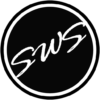
How do you promote your products or services? Printing media or online media? Regardless you may need a catalogue.
Table of Contents
What is a catalogue?
The catalogue is a media that contains a list of products and services from a company that sells to consumers, end-users or other companies. It can be in the form of cards, books, sheets or digital which is often referred to as an e-catalogue.
The catalogue is a very important promotion media, especially if your company sells products.
What are the Benefits of the catalogue?
By using a catalogue we can introduce products in detail to potential customers and make them interested in buying them.
The process of selecting products according to customer needs is also easier because a catalogue can display several images from different points of view.
Product descriptions can also be displayed in as much detail as possible. The catalogue is still in use today, but sometimes only in the online version.
The challenge now is how to design a catalogue to fit the changing marketing environment.
In addition, nowadays people prefer something digital, so a catalogue design is needed both in print and online.
Catalogue Design Tips
It’s not just a catalogue design that makes your product or service attractive, but it’s your combination of knowledge about the target market and creativity that makes it interesting.
Let’s discuss how to design a catalogue in order to produce a good and attractive catalogue design in the eyes of consumers.
1. Use Appropriate Colors In The Catalogue Design.
Colour affects a person’s mood when reading a catalogue, it can even affect interest in buying the products you offered.
For example, a clothing boutique catalogue design fit depicts elegance, such as gold, silver, and ivory hues.
The mixture of black and white will give your product a simple and elegant impression.
Colourful colours are commonly used in toy catalogues with a target audience of children and household appliances catalogues with a target audience of parents.
2. Use Appropriate Typography in Catalogue Designs.
Use one or two types of typography in your catalogue and apply bold or italic type to create a distinct style and emphasize meaning.
Do not use too many types of fonts in a catalogue, because it will make the reader uncomfortable when reading it.
The general rule is to use at most two or three fonts at the same time. For example, use a serif font for headers if you use a sans serif font in paragraphs.
Use it consistently so that the typography in your catalogue not only produces an attractive design but also as a layout navigation guide for the reader.
3. Use Attractive and Detailed Photos.
Your catalogue should use sharp photos with consistent lighting and background. Usually, images for catalogues use a resolution of 300 dpi.
To get professional image results, use professional photography services around you. Usually, professional photography services use cameras that are capable of producing quality and detailed photos.
Display product images from several parts so that readers can see the product in detail. This can also add confidence to readers to buy the products we offer.
4. Use a Consistent and Creative Catalogue Design.
The catalogue is one of the branding media in the company. Make customers recognize your business brand through the patterns, layouts, and colours in the catalogue.
We recommend that you refer to the brand guidelines when designing a company profile. So that the resulting design still describes the characteristics of your company.
Read What is Brand Guidelines and it’s Benefit For Your Business
Create distinct designs across multiple pages of your catalogue to avoid being monotonous.
It takes creative ideas to create different catalogue page designs, such as full-size product images that can convey a more focused message.
5. Use Blank Space Techniques In Catalogue Design.
Catalogue pages filled with product images and descriptions discourage readers from reading them.
Combine empty space with the layout structure of the catalogue design to give readers a break.
This technique can also increase the reader’s focus on the image or description that we want to highlight.
6. Use Appropriate Paper in The Print Catalogue.
When printing a catalogue you should consider the type of paper. In terms of flexibility, there are two choices, namely paper that is more flexible or paper that is thicker and stiffer.
Flexible paper may be easier to carry and distribute while thicker, stiffer paper can protect your catalogue and make it more durable.
The choice of matte and glossy paper types must also be considered and adapted to the character of your company.
7. Show Attractive Product Descriptions.
It is very important to present a complete and detailed product description. But a product description that is too technical will make a boring impression.
Product descriptions not only provide technical specifications of the product but must also attract customers to buy them.
Read Important Factor in Editorial Design
Show other important information such as price, ingredients, quality and product benefits to readers. Also, write down a quick tip on how readers can use your product effectively.
Also provide contact information or website URL in your catalogue, so that readers can easily contact you or buy your products on the website.
Conclusion:
Catalogues are needed in corporate promotional activities, an attractive catalogue design is needed to read and write with copywriting that can lead readers to buy the products or services offered.
Catalogue design must follow the company’s brand guidelines and be developed creatively but still describe the characteristics of your company.
If you need a catalogue design and printing service that is capable of printing quality catalogues, please contact our team via the contact page.
SWS Digital Agency has an experienced design team designing catalogues for companies. We also have digital printing machines that are capable of printing catalogues with high colour accuracy.
Visit our Facebook and Instagram pages for the latest information and promos.
Creative Digital Agency
Layanan & Jasa
Kami memberikan layanan terbaik untuk setiap client kami, dengan harapan bisnis mereka dapat berkembang dan meningkatkan omset penjualan melalui digital marketing.
Tidak semua bisnis dapat di kembangkan dengan metode yang sama, ada perbedaan antara satu bisnis dengan bisnis lainnya. Oleh karena itu dibutuhkan tim kreatif yang dapat menemukan strategi digital marketing yang tepat untuk bisnis Anda.








